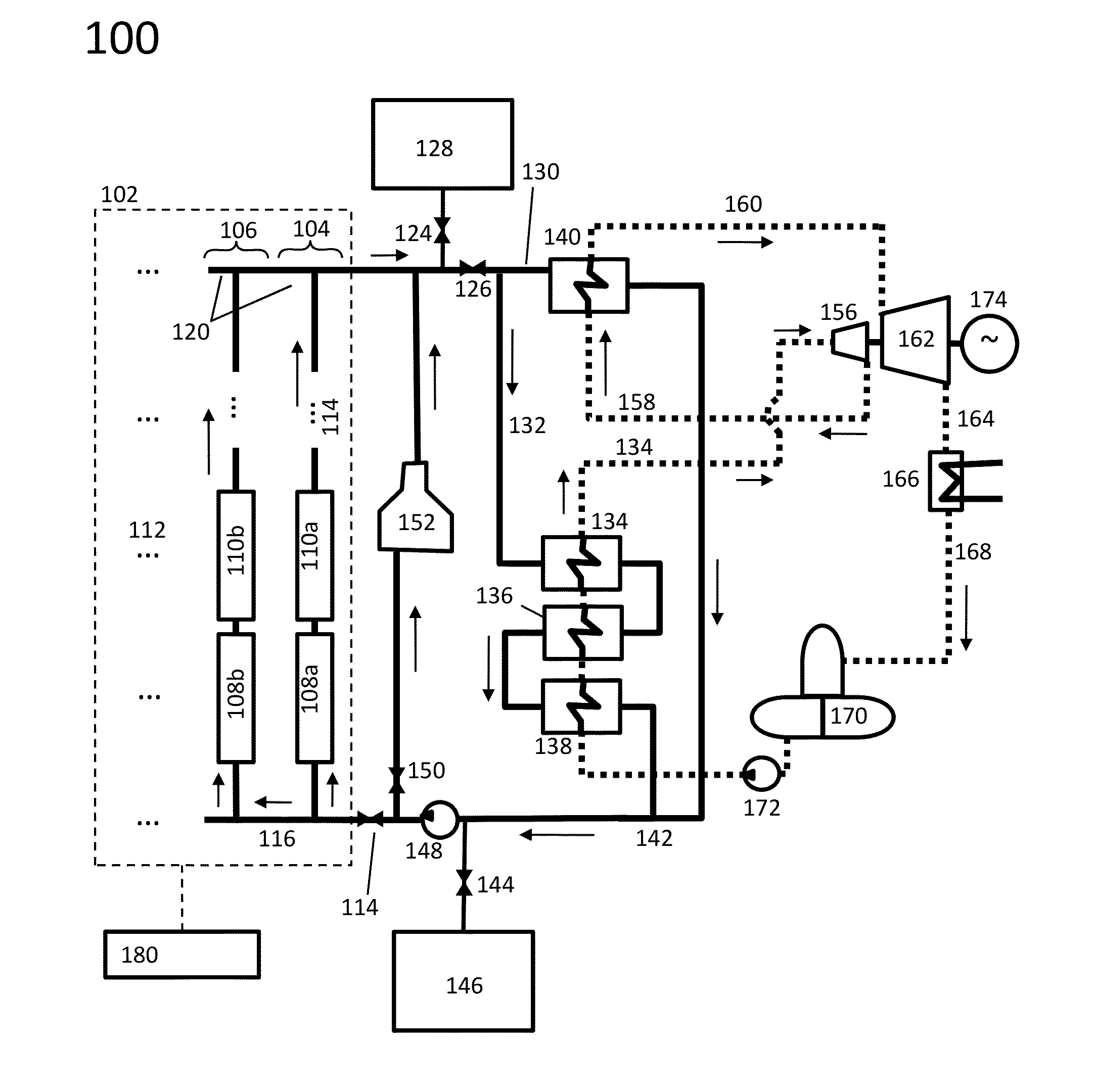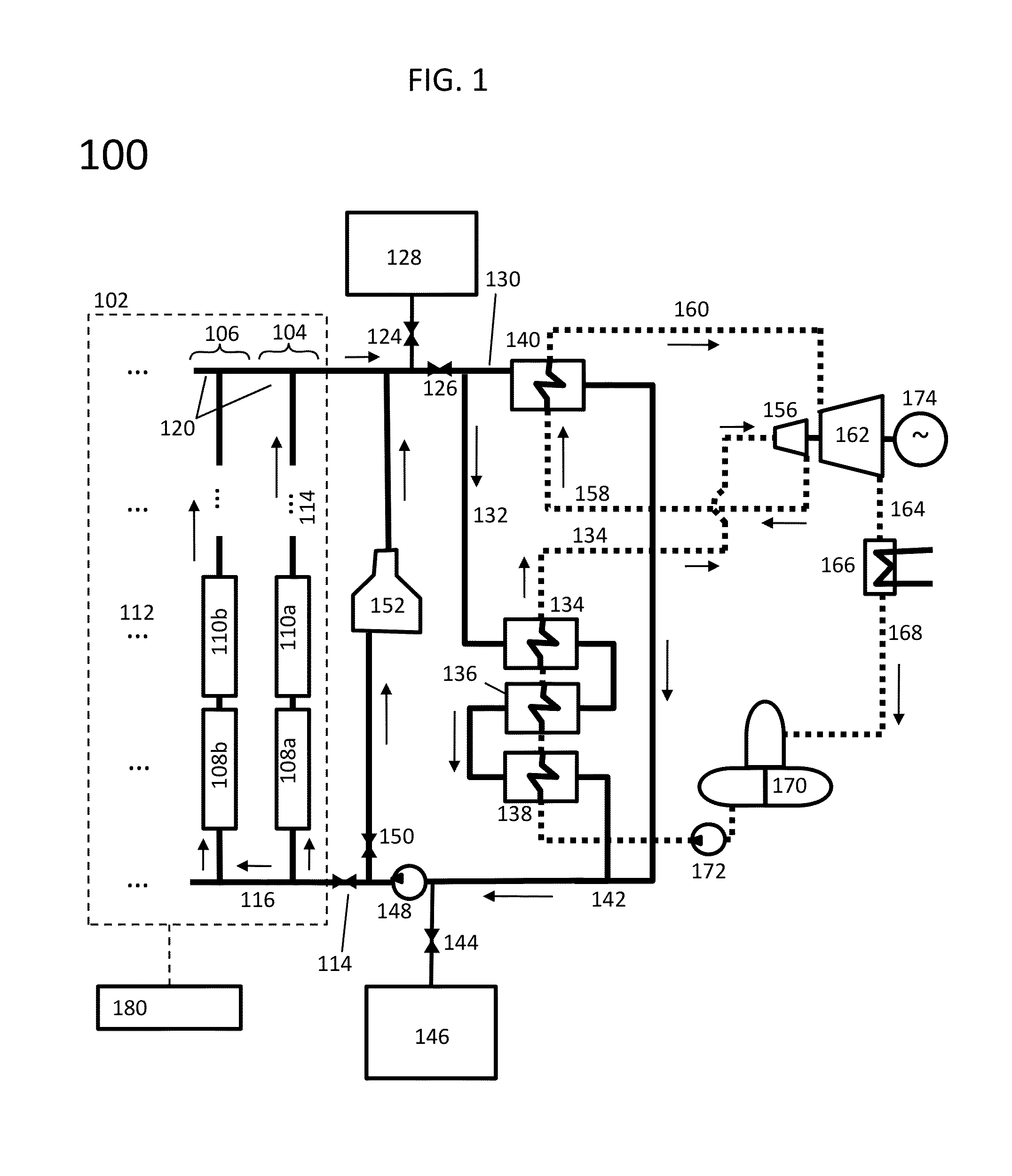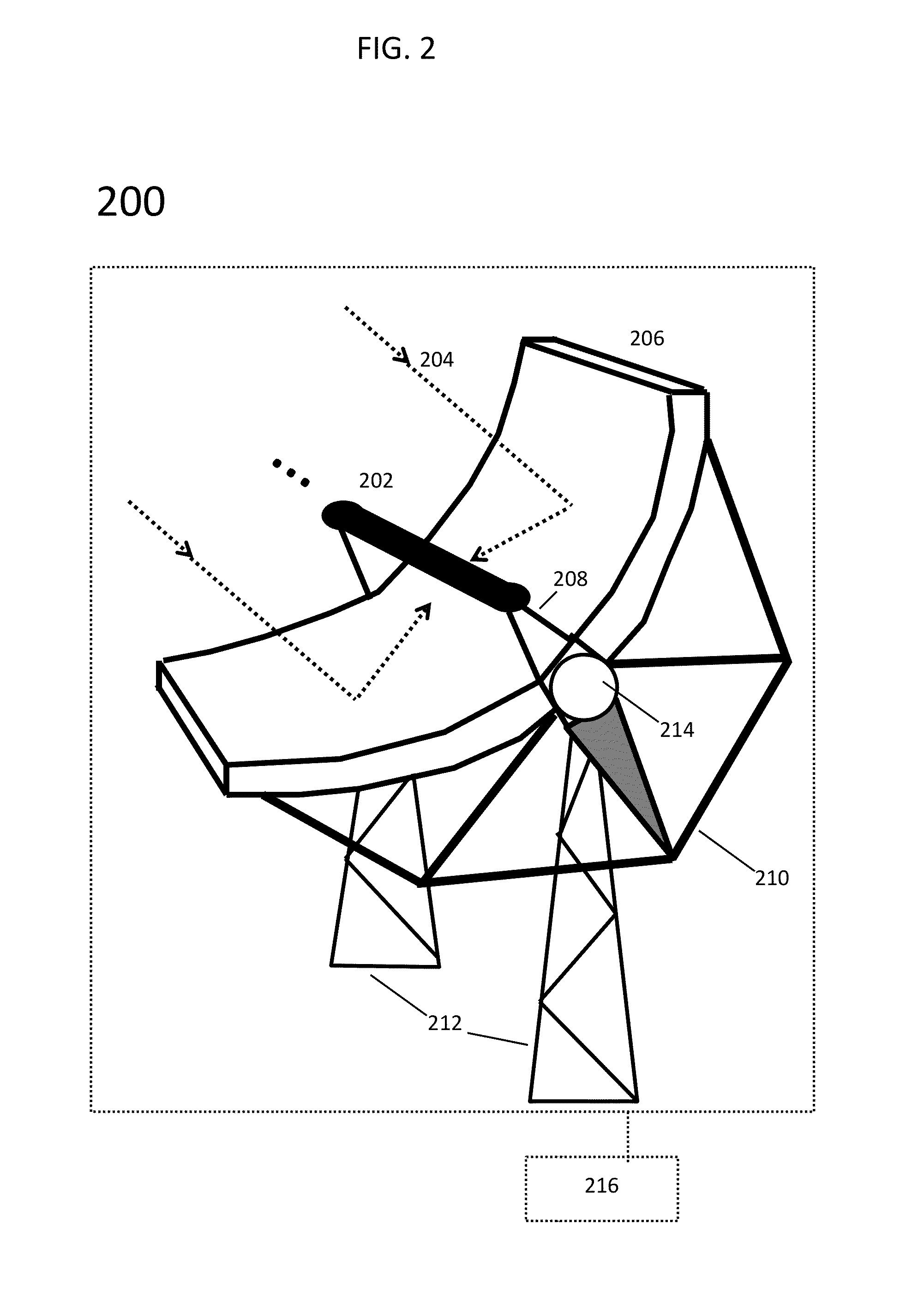Cavity Receivers for Parabolic Solar Troughs
a parabolic solar and receiver technology, applied in the field of concentrated solar power, can solve the problems of increasing temperature and cost, and reducing the cost of storage, so as to reduce the levelized cost of energy and be less costly
- Summary
- Abstract
- Description
- Claims
- Application Information
AI Technical Summary
Benefits of technology
Problems solved by technology
Method used
Image
Examples
Embodiment Construction
[0114]FIG. 1 depicts an illustrative system 100 for the collection of solar energy in the form of heat and the conversion of the collected heat to electricity. Subsequent figures will clarify the application of embodiments of the invention to such a system and similar systems which use the collected heat in other manners, such as to generate steam for industrial processes. The system 100 depicted in FIG. 1 comprises a solar field 102 for the collection of solar energy. The solar field 102 comprises a plurality N rows (e.g., row 104, row 106), depicted in FIG. 1 as viewed from above, where each row comprises a plurality M receivers (e.g., receivers 108a, 108b; receivers 110a, 110b, etc.) upon which solar radiation is focused by parabolic collectors (not depicted). The plurality of the N rows is indicated in FIG. 1 by horizontal ellipses (e.g., ellipsis 112); the plurality of M receivers in each of the N rows is indicated in FIG. 1 by vertical ellipses (e.g., ellipsis 114). The number...
PUM
| Property | Measurement | Unit |
|---|---|---|
| rim angle | aaaaa | aaaaa |
| temperature | aaaaa | aaaaa |
| temperatures | aaaaa | aaaaa |
Abstract
Description
Claims
Application Information
 Login to View More
Login to View More - R&D
- Intellectual Property
- Life Sciences
- Materials
- Tech Scout
- Unparalleled Data Quality
- Higher Quality Content
- 60% Fewer Hallucinations
Browse by: Latest US Patents, China's latest patents, Technical Efficacy Thesaurus, Application Domain, Technology Topic, Popular Technical Reports.
© 2025 PatSnap. All rights reserved.Legal|Privacy policy|Modern Slavery Act Transparency Statement|Sitemap|About US| Contact US: help@patsnap.com



